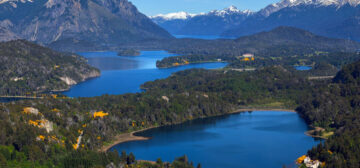Tap water is generally considered safe in main cities and towns, especially in Buenos Aires, but otherwise bottled water is recommended. If bottled water is unavailable then boil water for over a minute before drinking.Argentina serves up an exceptional standard of food, although choices can often be restricted to meat, pasta and pizza. Buenos Aires, however, offers a wide selection of culinary genres, with Japanese, Thai and Asian-fusion food becoming increasingly popular. Vegetarians may struggle to find extensive veggie options, but most restaurants do serve vegetables and salads. Outside Buenos Aires, however, vegetarians may be faced with quite limited choices. Wherever you are in the country, meat is the name of the game here, and if you fancy broadening your carnivorous horizons, then there is a weird and wonderful array of meat treats to get stuck into. The traditional Argentine parrilla (grill) is the very heart and soul of Argentina’s cuisine. Sample morcilla (blood sausage), chinchulines (intestines), or simply go for a slab of prime Argentine beef – all sizzled to perfection. Don’t forget to liberally douse your chosen meats in delicious chimichurri – a sauce made from finely chopped parsley and oregano, garlic, olive oil and vinegar. Those after an authentic and reliably delicious meat experience in Buenos Aires, try El Trapiche in Palermo, and Desnivel in San Telmo. For breakfast, head to a traditional confitería (café) and sample a few medialunas (small, croissant-like pastries) and a strong café con leche. In cities, fashionable resto-bars (restaurant-bars) are taking hold, offering more contemporary takes on traditional Argentine cuisine, and all manner of lunch options. A strong Italian influence means quality ice cream is also popular, and in summertime Buenos Aires the many gelaterias (ice cream parlours) are certainly worth making use of. In the evening, Argentines dine late – 9pm is considered early – and the feasts are typically massive.Argentina’s wines have flooded the international market in recent years, and are famed for their quality and value. Try a light pinot noir from Patagonia or an inky and smooth Malbec, and don’t miss Argentina’s celebrated white, the aromatic Torrontés.Around 15% is acceptable in restaurants as well as bars (unless you were dissatisfied) which waiting staff rely on to survive.







